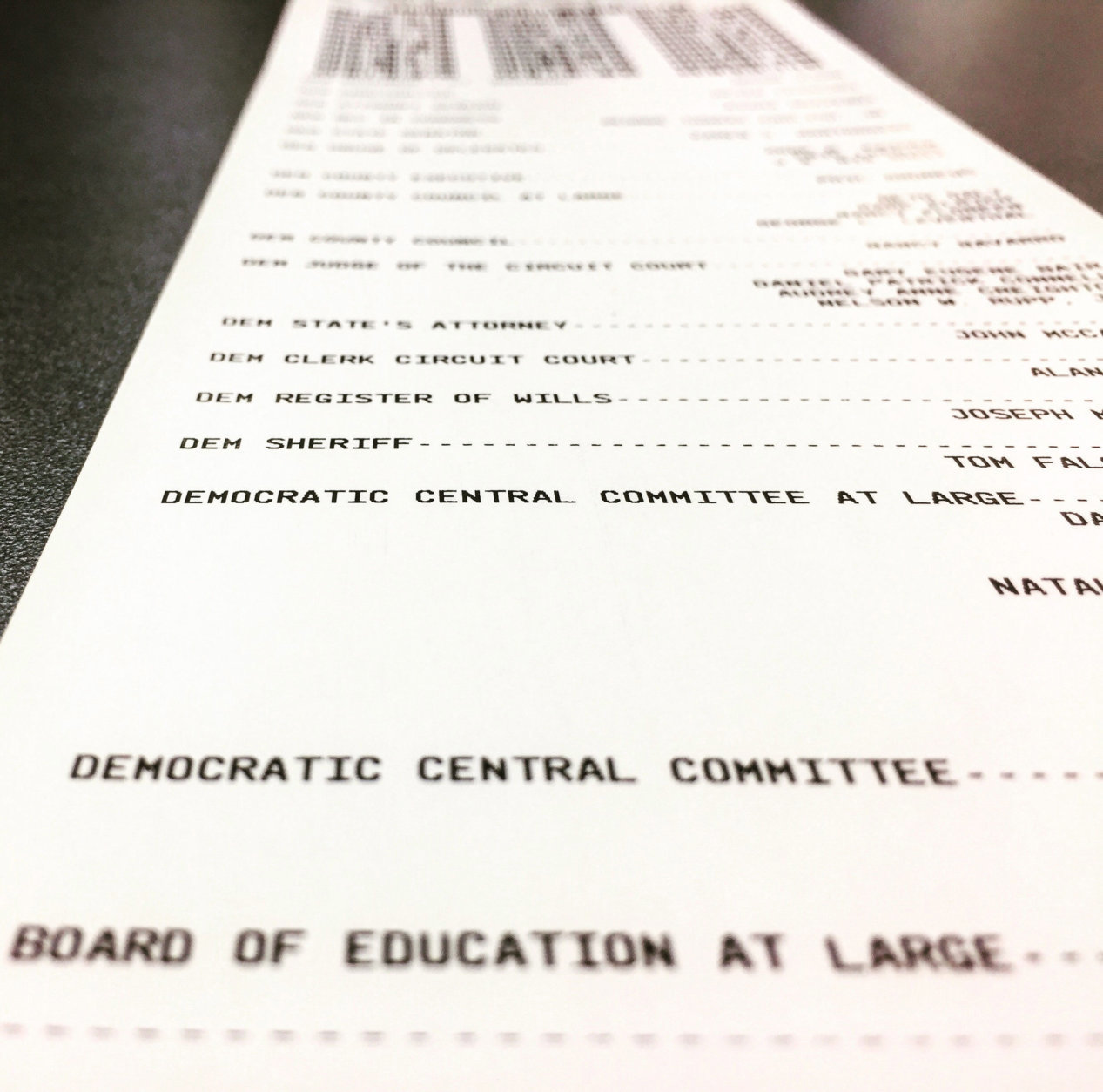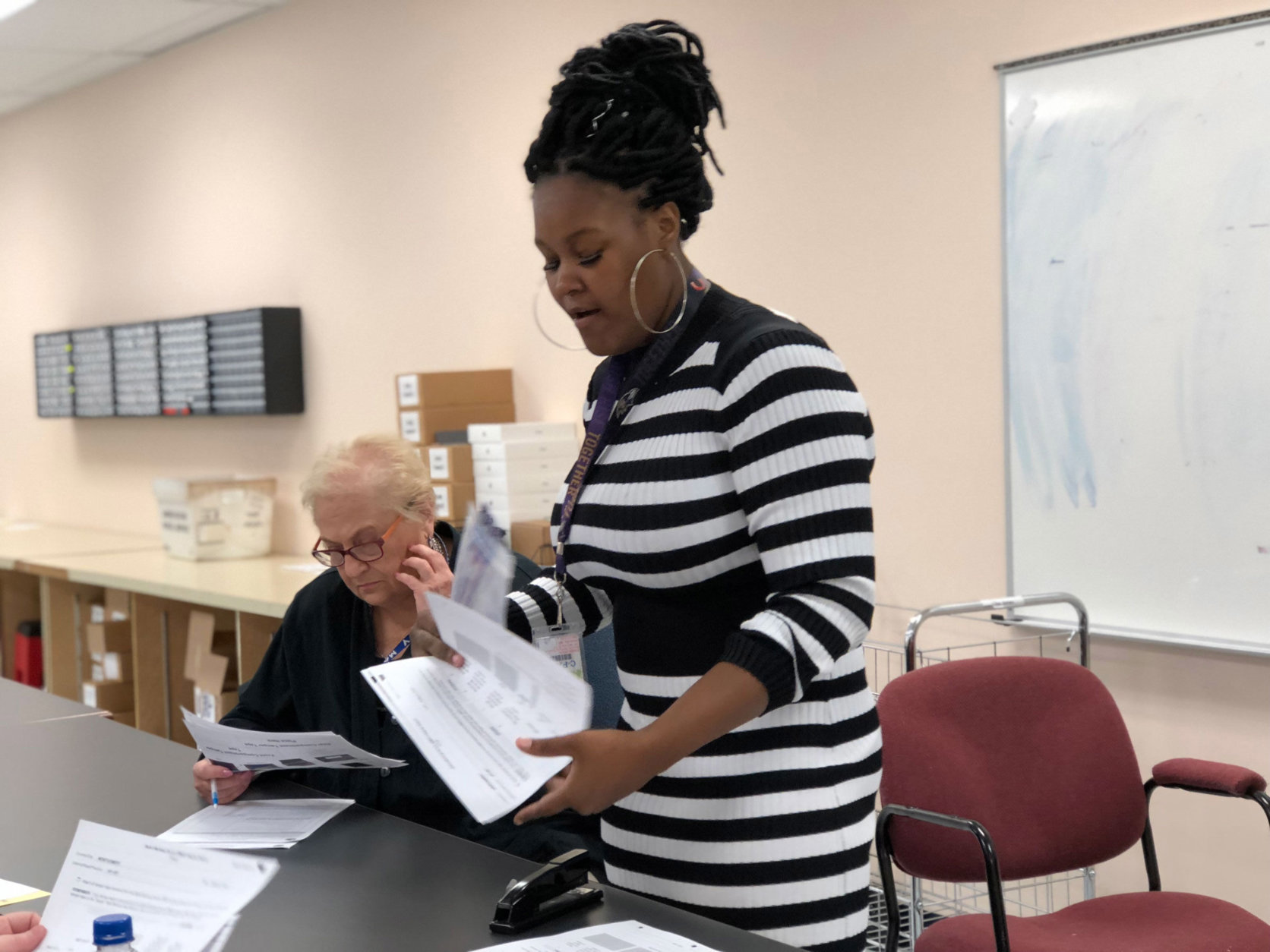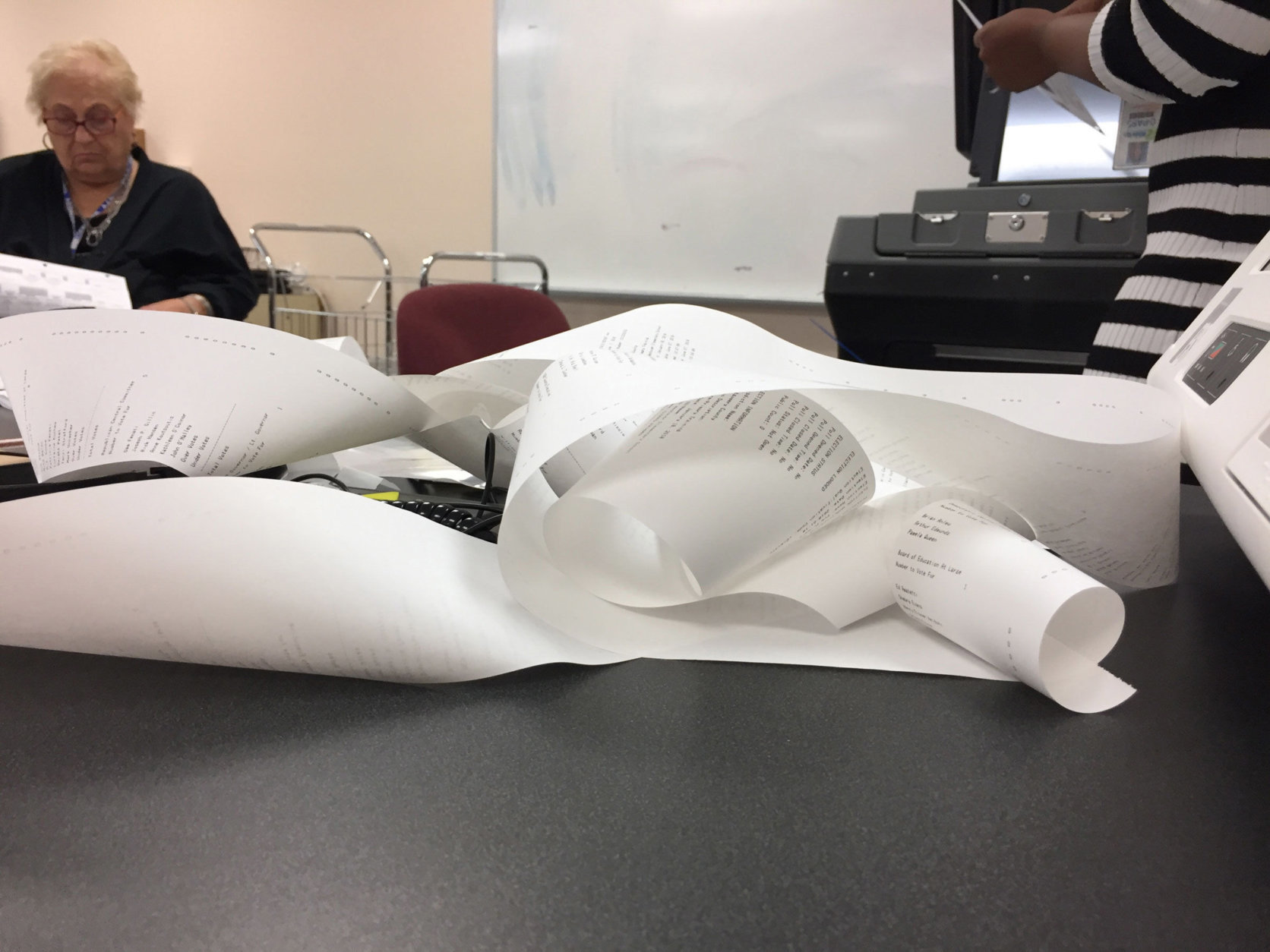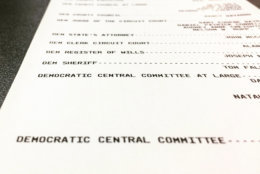GAITHERSBURG, Md. — Ballot paper, memory sticks and tamper tape are just some of the items being checked and re-checked by election workers preparing for the Maryland primary.
At each step, workers are making sure that the right ballot gets to the right early voting center, that serial numbers on machines match up, and that there’s paper enough to record votes in each one of the optical scanners.
And so that there’s no mistake, the tamper tape is there to prevent tampering. It’s placed on sections of machines that can be opened. Any indication that the tape has been disturbed triggers a check and is part of the reason for the data backups that are done along the way.
With just one week to go before the Maryland primary’s early voting period, from June 14 to June 21, Montgomery County’s Board of Elections offered a walk through of the procedures that go into securing the machines, the electronics, even the ballot samples—there are 77 ballot styles in the county’s early voting.
That’s because a voter can cast their ballot no matter which of the 11 early voting centers they choose to go to—they’re not required to go to their assigned polling place during early voting.
Marjorie Roher, the public information officer with the Montgomery County Board of Elections, said despite national coverage of concerns of possible international meddling, she’s not aware of any increase in questions about the security surrounding the voting process.
While there have been efforts to get Maryland to change the way voters can access absentee ballots—forms can be downloaded to home computers, a prospect that has raised alarms among some state groups who worry malware could somehow subvert the vote—legislation to tighten that process has failed in Annapolis.








Roher said that in past elections, when touch screens were introduced, there was worry about the integrity of voting—that the machines could be hacked. But Maryland made the switch to optical scanners that leave a “paper trail,” said Roher.
“What voters have to understand is that it is a secure system. It is not connected to the internet at any time.”
Roughly 800 pieces of equipment will be used in the upcoming primary.
“We are insuring that security seals are on each of piece of equipment which have serial numbers and seal numbers,” said Roher. “There’s documentation that goes to the elections judges that shows them what the seal numbers are. They know when they go to open the equipment if there’s a different seal number, they know that they need to contact the IT department right away.”
Roher, who’s worked at the board of elections for decades, said, “Our goal is to make sure that the voters have the opportunity to vote and that they have the confidence that their vote is going to be treated with the security and care that they intended.”








